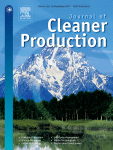
Is sharing the solution? Exploring public acceptability of the sharing economy
Read the full paper here.
Abstract
Advocated as a solution to a range of economic, environmental and social problems, the sharing economy has grown rapidly in recent years. However, despite rising up the political agenda, the concept has been increasingly critiqued in relation to unintended economic and social consequences. Whilst existing research has explored the motivations of existing participants in sharing-based practices and business models, little is yet known about wider public perceptions of the sharing economy. Investigating public discourses, this paper explores how citizens may respond to attempts to mainstream the sharing economy, discussing wider desires and concerns surrounding the concept. In a series of four two-day workshops (n = 51), we utilised deliberative research methods to engage participants in discussion surrounding the sharing economy and its role within a more sustainable, resource efficient future. Overall, positive perceptions dominated discussions, with participants independently highlighting reduced waste and resource use, increased access to unaffordable goods, and increased community cohesion as key benefits of sharing. However, echoing existing critiques, a number of concerns were also raised. Our findings suggest that, in addition to personal interests (such as affordability, convenience, and hygiene), public acceptability of the sharing economy was contingent on it meeting a number of broader social values. These include desire to: foster social equality, in relation to both the opportunity and benefits promised by the sharing economy; encourage and support the development of strong and independent local communities; and ensure that business practices operate fairly in the shared interest of business, consumers and the environment. Given the implications for everyday life and consumption practices, we argue public perspectives need to be given consideration within the debate surrounding which aspects of the sharing economy should, and should not, be fostered.
Keywords: sharing economy; sustainable consumption; public perceptions’ discourses; deliberative research








